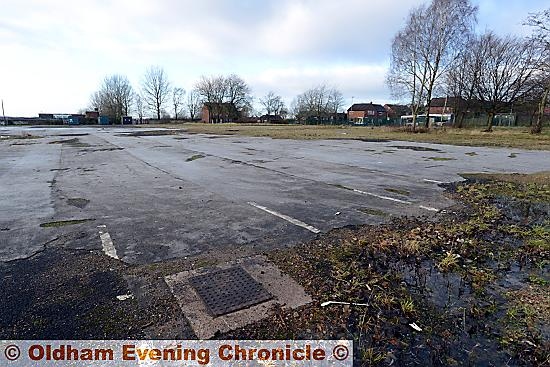Phoenix ready to rise
Reporter: Karen Doherty
Date published: 03 January 2014

Former Fitton Hill School site: location for Phoenix Free School?
THE controversial Phoenix Free School — staffed entirely by former military personnel — could open in Fitton Hill.
Oldham Council wants to give land in Rosary Road for a peppercorn rent to avoid losing a more valuable development site elsewhere.
A new school building — funded by the Department for Education (DfE) — would eventually be built on the site of the former Centre for Professional Development.
In the short-term, Phoenix would open in September at the neighbouring former Marland Fold Special School.
The council would also look at drawing up an agreement with the school for Fitton Hill Bulldogs amateur rugby league club to use the adjacent playing fields.
Free schools are state-funded but independent from local-authority control and run by groups such as parents, charities or businesses.
Phoenix was given the go-ahead by the Government in May and has been searching for a site in recent months — one being the former North Chadderton lower school, Broadway. But this is prime development land and the council fears it could be forced to hand it over free if it doesn’t come up with a suitable alternative.
Last year the council was told by the DfE to give part of the former South Chadderton School site to Collective Spirit Free School without charge — estimated to have left the council £4 million out of pocket.
Phoenix would eventually have 840 pupils across seven years, including a sixth form. The council has already raised concerns with the DfE that the borough has 1,108 too many secondary school places, and that one or two of Oldham’s new multi-million-pound academies could be under threat if Phoenix opens.
The proposals for the land at Fitton Hill will be decided by the council’s cabinet committee on Monday. The final decision rests with the Government.
A report by Emma Alexander, Oldham’s executive director for commercial services, states: “The proposed location is considered to be most beneficial in terms of preserving value of retained land and future development potential, wider community benefits and joint usage of green-belt land to the rear.”
Most Viewed News Stories
- 1Increased police patrols in place following large-scale disturbance in Oldham town centre
- 2Latics' Boundary Park stadium to open on Christmas Day for community
- 3Police issue appeal following two targeted arson attacks in Oldham
- 4Man arrested and murder probe launched following the death of a man in Royton
- 5Hulme Grammar aims to ignite future tech talent with 12 hour 'Hackathon'




